FAYOUM:
The city is one of the most beautiful cities and the nature of the Egyptian people,It is located in the heart of Egypt between the Delta and Upper southwest of Cairo, a distance of hundred kilometers, An oasis in the Republic and is a microcosm of Egypt, where he represents the Bahr Youssef gaining,The delta represents the north coastal Lake Karun .. Fayoum is the most important tourist areas in Egypt, where high concentrations of all elements of tourist attractions which is characterized by the beauty of nature and its mild weather alongYear, has emerged in which pre-history, civilizations that left their mark through the effects of the everlasting Pharaonic, Greek, Roman, Coptic and Islamic, and an area of 6068.70 square kilometers
The city is one of the most beautiful cities and the nature of the Egyptian people,It is located in the heart of Egypt between the Delta and Upper southwest of Cairo, a distance of hundred kilometers, An oasis in the Republic and is a microcosm of Egypt, where he represents the Bahr Youssef gaining,The delta represents the north coastal Lake Karun .. Fayoum is the most important tourist areas in Egypt, where high concentrations of all elements of tourist attractions which is characterized by the beauty of nature and its mild weather alongYear, has emerged in which pre-history, civilizations that left their mark through the effects of the everlasting Pharaonic, Greek, Roman, Coptic and Islamic, and an area of 6068.70 square kilometers
On December 21 at the temple of Qasr Qarun in the Fayoum, for most of the year the inner sanctum of the main temple of qasr Qarun is shrouded in darkness . On December 21 a day celebrating the winter solstice, a phenomenon popularly known as the " Wonder of the Sun " and considered as an astronomical pharaonic miracle.
Lake Qarun, view from Abu Nemaa Peninsula:
Valley of the Whales:
Lake Qarun, view from Abu Nemaa Peninsula:
Valley of the Whales:
In July 2005 at the 29th session of the UNESCO world Heritage Committee in Durban, South Africa, the Valley of the Whales was added to the list of World Heritage natural sites , due to its uniqye importance in preserving the evolution of the whales and their transtion from a terrestrial life to a marine one. The first natural site in Egtpt to be added to the list. take nothing but photos, leave nothing but foot prints! Fayoum Oasis.
"You drive through Wadi Rayan to reach Wadi Al Hittan, or Valley of the Whales, a UNESCO World Heritage site containing invaluable fossil remains of the earliest, and now extinct, suborder of whales, archaeoceti. These fossils represent one of the major stories of evolution: the emergence of the whale as an ocean-going mammal from a previous life as a land-based animal. This is the most important site in the world for the demonstration of this stage of evolution. The number, concentration and quality of such fossils here is unique.
As you make your way down the dip into the valley behind Garet Gohannam (or the Mountain of Hell in reference to the fiery late afternoon colours), you will be faced with an impressive expanse of what was once an ancient sea bed. Surreal mushroom-like natural sand sculptures protrude out of the ground and as you descend into the bottom of the valley the rest of the world drifts away. Cars are forbidden from driving further than the car park, and a cafe, gift shop and amenities looking as if they’ve been sculpted out of sand itself encircle the entrance to the strictly camel or human-only walking tour around the skeletal exhibits.
"You drive through Wadi Rayan to reach Wadi Al Hittan, or Valley of the Whales, a UNESCO World Heritage site containing invaluable fossil remains of the earliest, and now extinct, suborder of whales, archaeoceti. These fossils represent one of the major stories of evolution: the emergence of the whale as an ocean-going mammal from a previous life as a land-based animal. This is the most important site in the world for the demonstration of this stage of evolution. The number, concentration and quality of such fossils here is unique.
As you make your way down the dip into the valley behind Garet Gohannam (or the Mountain of Hell in reference to the fiery late afternoon colours), you will be faced with an impressive expanse of what was once an ancient sea bed. Surreal mushroom-like natural sand sculptures protrude out of the ground and as you descend into the bottom of the valley the rest of the world drifts away. Cars are forbidden from driving further than the car park, and a cafe, gift shop and amenities looking as if they’ve been sculpted out of sand itself encircle the entrance to the strictly camel or human-only walking tour around the skeletal exhibits.
Transport issues meant that we didn’t arrive at the site until around 3pm but after a quick rehydrating pit stop at the lovely quiet cafe, we set off around the valley. Guides say you should allow two to three hours to see all the whales, which is a generous amount of time. Paths through the outdoor museum are laid out with stones, wood and rope, and sheltered resting places provide respite from the sun as well as information boards setting out the area’s incredible natural history.
The park is fascinating. As a UNESCO heritage site it is well-kept and sympathetically arranged, although staff told us that the owner is currently unable to pay their wages due to the lack of visitors since the revolution. The roads can get drifted with sand, so to make sure you arrive with enough time to fully appreciate the surreal surroundings it would be worthwhile camping overnight at the site in tents provided. The walk around the valley should be done in cool early morning or late afternoon. There being no electricity and nothing else to do but watch the stars, listen to the desert and absorb the natural history you’re surrounded by, it is a world away from city life, all the trappings of modernity, and a trip that is more than worth the trek."source
Madinet Madi, Fayoum, Egypt!
Medinet Madi is considered to be the most interesting site around Fayoum. The main temple of Medinet Madi was built under the pharaohs Amenemhet 3 and 4, who belonged to the 12th Dynasty. It was dedicated to two deities, the popular crocodile-god Sobek and the serpent-goddess Renenutet. Inside the latter sanctuary some wall-decorations can still be made out.The ruins of Medinet Madi contain one of the most important monuments still remaining in Egypt, a temple of the Middle Kingdom, a Greaco Roman temple, a fortified Roman camp and another Ptolemaic temple. Medinet Madi represents the succesful integration of an archaeological site with the nearby Wadi el Rayan Protected Area.
One of the Lions that is the emblem of Medinet Madi Archaeological Park, situated to the south west of Fayoum city.
North of Lake Qarun, fayoum Oasis, Egypt
The northern side of Lake Qarun, around Gebal Qatrani, hosts one of the world’s most complete fossil records of terrestrial primates and marshland mammals, critical to our understanding of human evolution. Discoveries continue to be made and studied by scientists.
The Pyramid of Hawara :
located to the south east of Fayoum city. built during the reign of Amenemhet III. the photo was taken from the mortuary temple that originally stood adjacent to this pyramid. It is believed to have formed the basis of the complex of buildings with galleries and courtyards called a "labyrinth" by Herodotus.
Dunes in fayoum:
A string of dunes at the southern extremity of the lower lake, Wadi Rayan protected area
Cannonballs, north of Lake Qaroun:
Earth's oldest paved road: Forty-three miles southwest of Cairo lies a basalt quarry favored by ancient Egyptian artisans. Old Kingdom craftsmen laboriously cut this hard, black, glassy rock into royal sarcophagi and pavements for the mortuary temples at Giza just outside.
Ancient Egyptian road is hailed as landmark of engineering AP - May 21, 1999 - Cairo A 4,500-year-old road built by the ancient Egyptians has joined the Eiffel Tower and the Statue of Liberty on a list of historic landmarks of engineering. The road - which runs for more than three miles in Fayoum province, 50 miles southwest of Cairo - is "the oldest surviving paved road in the world," said Jane Howell, press officer of the American Society for Civil Engineers, in Washington on Thursday.
Paved with huge slabs of limestone and sandstone, the road was originally seven miles long and linked quarries to a lake, now called Lake Qarun. Animal-drawn carts transported the quarry stones, some the size of refrigerators, to a quay where they were loaded onto boats, said Mustafa Suleiman, the head of the Egyptian Society for Civil Engineers. The president of the American Society for Civil Engineers, Daniel S. Turner, dedicated the road on May 15 as a "Civil Engineering Historic Landmark." The society's bronze plaque says construction began in 2575 B.C. and continued with upgrading for 441 years.
The society, based in Reston, Va., conducted three years of research on the road before its engineering historians approved the classification. The society has similarly honored the Eiffel Tower, the Statue of Liberty and the Panama Canal for their contribution to the human race.
watching birds: Lake Qarun is an internationally designated “Important Bird Area,” where thousands of migratory birds rest during their winter migration pattern south. Flamingos, grey herons, spoonbills and many duck species, to name a few, flocked to the lake during the fall.
Old portraits in fayoum:
They are the earliest painted portraits that have survived.
Their look is familiar to you because you know these images from Byzantine icons. It is a look of a personal farewell, they look at your eyes directly but simultaneously also through you far away.
Tunis is a small village in Fayoum on the border of the Lake Qarun. Educated by a Swiss potter who started a pottery school for children in 1970, several local potters have started pottery schools and sales points. Tunis is inhabited by expats, Egyptian and foreign artists, Cairo intellectuals and rural population and has the looks of a Mediterranean resort: light colored domes, olive groves, sun flowers and bougainvillea everywhere. Still, it hardly ever rains in this place and the area around is dusty and dry, creating strange contradictions between the bright houses and colored flowers and the grey-brown sand around.
Wadi el-Rayyan:
( The origin of the name ) The name of the area may be derived from the Arab verb rawiya which means 'to drink enough' although it has also been related to the old name Rabana, occurring in the harris papyrus, where 'Rabana Peak ' is mentioned. Alternatively,an arab legend tells of an overload of these lakes called al-Rayyan, who was in the habit of robbing the caravans as they passed through thr region under his control. Source:Alberto siliotti, The fayoum and wadi El-Rayan.
Located in the southwestern part of the province of Fayoum and Wadi El Rayan consists of Lake Superior, lake Lower, and the waterfalls, which connects the lakes, and the eyes of Al Rayyan South lake And Jabal Al-Rayyan, a region surrounding the eye, and the Mount recycled, which is located near the Lake bottom.
The Wadi El Rayan is characterized by its environment, including integrated desert sand dunes and the natural and life Aiooon Various plant and animals, as well as a variety of marine fossils, as are the waterfalls of the area Various marine sports .. A reserve, 15 species of wild animals most important (al-Ghazal White - Ghazal Masri - Fennec Fox - Fox sand - the wolf) and there are several types of Hawks .
The Seila Pyramid:
The Seila Pyramid has long been one of Egypt's forgotten landmarks. Yet now archaeologists are beginning to think it may have been more impressive than they thought. Having been reduced to little more than a glorified 7m-high mound over its 4,500-year history. It was built by prolific 4th Dynasty pharaoh Snefru, father of Khufu and famous for having commissioned pyramids at Dashur and Meidum.
The pyramid at Seila (Silah or Sila) is a small step pyramid built of limestone, sit on the top of Gabal El-Rus overlooking the Fayoum, the pyramid is located to the North Eastern part of the Fayoum city Erected by Snefru, a king of the Fourth Dynasty of the Old Kingdom according to remains of two stelae bearing the name of king Snefru which were found near the pyramid .
The pyramid is Lacking subsidiary buildings, they are devoid of inscriptions, and seem to have no burial chamber The function of this pyramid is not clear, but its location, in this instance overlooking both the eastern half of the Fayoum and a large portion of the Nile Valley, may indicate that they served as lookout posts Silah Pyramid is one of a group of similar structures scattered throughout Egypt (Elephantine, Edfu, Hierakonpolis, Ombos, Abydos, Zawyet el Meitin and Silah) which have mystified archaeologists and deified the traditional definition aligned to Egyptian Pyramids since early times .
In the desert plain below the pyramid is Fag El Gamous cemetery where many Christian and Greaco - Roman rock-hewn tombs. They have yielded thousands of papyri which have played an important role in description of the ancient history of the Fayoum.
FAYOUM ART CENTER
The Fayoum Art Center is situated by the beautiful Lake Qarun, which is one hour away from Cairo. It is surrounded by mountains, sand dunes, palm trees and water falls. The participants are encouraged to let the scenic landscape of Fayoum inspire them, and to use material from the surrounding environment in their work.
Founded by the Egyptian artist, Mohamed Abla in 2006, the idea of the Art Center was inspired by the International Summer Academy in Salzburg, where Abla teaches. The Art Center is a place for artists to meet and get involved in workshops, with an exhibition hall to support and exhibit art work and an Art library.
The center is located by Lake Qarun in Fayoum, which is one hour away from Cairo. It is surrounded by beautiful mountains, sand dunes and palm trees, close to the Waterfalls –“Wadi El Rayan” and “Wadi Hetan” (The Whale Valley)! For more Info Check out the Official website of Fayoum Art Center
"For a long time now I have believed in the immense importance and role of art, and its power and ability to create great changes in a world full of conflicts. For years I have been thinking of creating the Fayoum art center as a harbor of art, where artistic talents combine to create extraordinary art. When the Fayoum art center was opened in 2006 it was a pleasure and an achievement to see my dream come true. I felt like there was a new hope being implanted in my life and hopefully the life of artists to come.
In 2007 I decided to create the winter academy as an annual experience where artists from different nationalities, ages and backgrounds can come together. In the winter academy artists live and work together and learn from one another in the form of workshops.
The Fayoum art center and winter academy have been wonderfully harmonious experiences with artists from different nationalities all over the world. Every year we will be trying to develop and excel our activities and events. I hope that you will join us one day."
Mohamed Abla Founder & Director
Um Buraigat:
This unique fresco represents Adam and Eve before and after their fall from grace. To the right they are depicted without genitals, innocent and unashamed. Next to Adam a horse tied to a tree symbolizes the control of evil. To the left Adam and Eve hide their shame with fig leaves after eating from the forbidden tree. Next to Eve’s head a snake symbolizes the fatal seduction. A Coptic script along the upper edge of the fresco describes their banishment from the Garden of Eden. This was found In Fayoum Tebtunis (um buraigat) ! You can watch this fresco in the Coptic museum cairo
water wheels in Fayoum:
Fayoum has a great number of water wheels, perhaps as many as 200. This was an important addition to Fayoum's economy in the 3rd century BCE, allowing the stream of the river to havewater lifted up to a level where it could be transported into the fields for irrigation. Fayoum 1929!
The two best places to see water wheels are either in Fayoum City, which has 4 standing next to another. 3 km north of town, there is a cluster of 7 water wheels!
The Cultural Palace Of Fayoum:
represents one of the modern landmarks. Among The other different Facilities,the Palace has a large Theater That presents Local Folk art and Plays and it has a huge Library.
Pigeon house:
is a part of the daily diet in many parts of Egypt and Pigeon houses, or dovecotes, are constructed from mud brick create an artificial mountainous topography. The droppings are also a valuable source of fertilizer and the houses are so ubiquitous that they are also part of the Egyptian national identity.
Ceramic artist 'Evelyne Porret' school:
EVELYNE PORRET "I came here when I was 20. My father was a Protestant minister and I came to visit. I fell in love with Egypt and decided to make my home here."
Evelyne noticed the creativity of the village children, who like to shape their toys out of the thick mud of the fields. She decided to help them shape a new future away from the grueling work in the fields. She eventually set up a school and workshop to encourage their passion for pottery.
EVELYNE PORRET "I had worked with the Egyptian artist Ramses Wissa Wassef in the 1960s who had set up a weaving school for village children to learn a new trade. I wanted to do the same in Fayoum."
And learn they did.
Mohamed Mahmoud Ibrahim has been working with Evelyne for more than a decade now, graduating from student to teacher. He says it gives him pleasure while he works on his own designs to help the younger students create a concrete memory of their daily lives. The children get involved in the process from start to finish with Evelyne and her assistants offering a guiding hand and soft words of advice.
EVELYNE PORRET "We don't tell them what to make. We just encourage them to draw what they see every day. And when I see something good, I suggest things they might add. We talk about it and they put what they want. Some of the designs are perfect and I always find it extraordinary -- so simple and so beautiful."
Eighteen-year-old Barakat Saleh was drawn to the school several years ago. His signed pieces are sold in Cairo. He dreams about matching the success of several former students who now make a living with their own pottery workshops in Fayoum. Another former student was recently invited to display his pottery in an international exhibit in Dubai.
Evelyne is always promoting her students.
EVELYNE PORRET "I'm always astonished to see their original designs -- some are naive, some are quite sophisticated. I love their enthusiasm. And I see in the village now they are forming their own community of potters."
And so, ceramic artist Evelyne Porret encourages the children of Fayoum to explore their talents and recreate the simple beauty of life in the oasis both for pleasure and for profit.
Lake Qaroun:
The main Lake Qarun has a surface area of 234 km² and is 45 metres below sea level. It had freshwater in ancient times, but it has now saltwater. Surplus water has since 1966 been pumped from Qarun to the Wadi Rayan, where two large lakes have been formed. There are no public records of their surface levels, but it may be between 20 and 70 metres below sea level.
The Round Hills – هضبة المدوَّرة
There are numerous isolated hills, such as the roundish Gabal el Medawara
Round Mountains, Wadi el-Rayan Protected Area, Fayoum Oasis
A couple looks at portraits displayed during the exhibition 'Without a Visible Future Fayum's Portraits + Adrian Paci' held at the National Archaeological Museum of Madrid, Spain, 30 May 2011. The exhibition features thirteen Fayum mummy portraits, commonly painted in this Egyptian region during the Roman period between the 1st and 3rd centuries AD
National Geographic Magazine
February 12, 2008
Archaeologists have uncovered the earliest known agricultural settlement from ancient Egypt, a new study says. (See photos of the site and artifacts.)
The 7,000-year-old farming-village site includes evidence of domesticated animals and crops—providing a major breakthrough in understanding the enigmatic people of the Neolithic, or late Stone Age, period and their lives long before the appearance of the Egyptian pharaohs.
A pot from the Naqada II period, Egypt.
Apr 17, 2008
A Potted View of Ancient Geometric Imagery
Pottery from the classical world is replete with mythological imagery, so much so that classicists treat the familiar images on black and red Attic ware as a respectable class of “witnesses” to myths otherwise known from texts.
Since the onset of human history, creative artisans have decorated pots and vases with whatever occupied their minds. In some cases, pictures found on vases represent traditions not attested in any of the texts at our disposal
National Geographic News
March 6, 2008
Six new species of ancient bat dating back 35 million years have been discovered in Egypt, researchers say.
The new species were found by experts who analyzed 33 fossils—including teeth and jawbones—that had been unearthed over a period of decades in El Faiyum
Many of Egypt's most famous monuments, such as the Sphinx and Cheops pyramid at Giza, contain hundreds of thousands of marine fossils, according to a new study. Most of the fossils are intact and preserved in the monument walls, giving clues to how the monuments were built. The authors suggest the stones that make up the Giza plateau, Fayum and Abydos monuments must have been carved out of natural stone as they reveal what chunks of the sea floor must have looked like over 4000 years ago, when the buildings were erected
April 15, 2009--A wooden casket decorated with six different gods was among those recently found in a cache of 52 rock tombs in Lahun
Nearly 2,000 years ago, at a time when Egypt was under the control of the Roman Empire, a young woman with an elaborate hairstyle was laid to rest only yards away from a king's pyramid, researchers report. She was 5 feet 2 inches in height, around age 20 when she died, and was buried in a decorated coffin whose face is gilded with gold. A nearby pyramid, at a site called Hawara, was built about 2 millennia before her lifetime. The location of her burial is known from archival notes. High-resolution CT scans reveal that, before she was buried, her hair was dressed in an elaborate hairstyle.
May 31, 2001 - Reuters
Fossilized remains of a gargantuan plant-eating dinosaur, the largest animal ever to walk the Earth, have been unearthed in a desert oasis in Egypt at a site that eons ago was a lush coastal paradise, researchers said on Thursday. The discovery of a partial skeleton of Paralititan stromeri was made by 31-year-old University of Pennsylvania doctoral student Joshua Smith, who went on a dinosaur hunt at a remote site that had yielded spectacular finds in the first half of the 20th century in expeditions led by German paleontologist Ernest Stromer
Broken pieces of clay pottery have revealed the names of dozens of Egyptian priests who served at the temple of a crocodile god, Egypt's Supreme Council of Antiquities (SCA) announced.
Engraved with text dating back to the Roman period, the small potsherds have been found by Italian archaeologists on the west side of the temple dedicated to the crocodile god Soknopaios in Soknopaiou Nesos, an Egyptian village in the Fayoum oasis.
Called ostraca from the Greek word ostrakon (meaning "shell") the inscribed pot fragments “have been very helpful in illuminating the religious practices and the prosopography of Greco-Roman Egypt," the SCA said in a statement.
"We found some 150 ostraca. The majority was inscribed with the names of the priests who served at the temple," Mario Capasso, professor of Papyrology at Salento University, told Discovery News.
"A recurring name is that of a priest named Satabous," Capasso said.
According to Capasso, who co-directed the excavation with Paola Davoli, associate professor of Egyptology at Salento University, each ostracon was used in a sort of ballot draw to determine specific religious roles in the temple.
"The ostraca help our understanding of the mechanism of role assignments in the Soknopaios priesthood during the Roman period. Basically, the priest whose name was written on the drawn ostracon was destined to cover a specific religious role,"
The Italian archaeological mission of Salento-Litchi University stumbled upon a pair of gigantic seated lion statues on Monday.
They were found erected at the entrance of Soknopaios Temple at the Ptolemaic town, Dimeh Al-Siba, in Fayoum.
Dimeh Al-Siba, which means ‘Island of the Crocodile god,’ is located eleven kilometres to the north of Qarun Lake. It was founded by Ptolemy II on top of a Neolithic residential area.
The Ptolemaic-era town contains a collection of residential houses, a large temple to worship Sknopaios, in ancient Egypt Sobek-en-Pai (crocodile), a bakery and a market.
During excavation work carried out by archaeologist and director of the Italian mission, Mario Capasso, a pair of lion statues appeared on the sand surface.
The lion statues are skillfully carved of limestone
'Melherpri' found in Fayoum;2013-03-11: CHICAGO (Reuters) - CT scans of 137 mummies spanning four geographies and 4,000 years of history show that hardening of the arteries was commonplace, especially in older individuals, suggesting this key sign of heart disease may be a part of aging rather than the byproduct of eating too many Big Macs.....2013-03-09: Enlarge image i Mummy 38 was between 45 and 50 years old when she died in ancient Egypt. She was excavated from the Fayoum Oasis.
Perhaps an episode of National Geographic being filmed? At Qasr El Sagha Temple, North of Lake Qarun!
source: Fortheintolerants





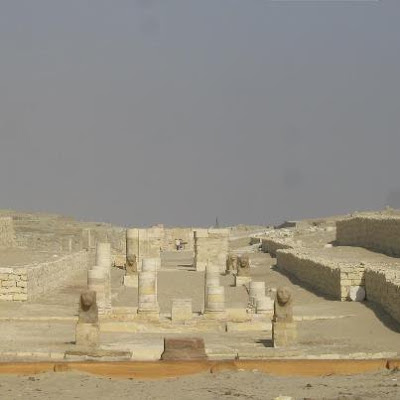

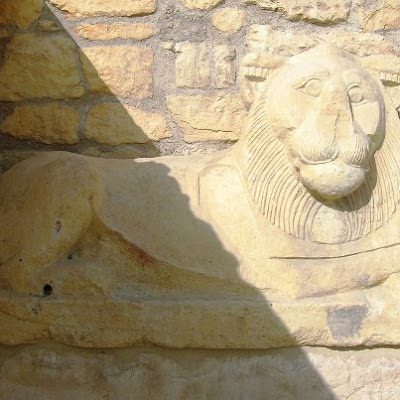






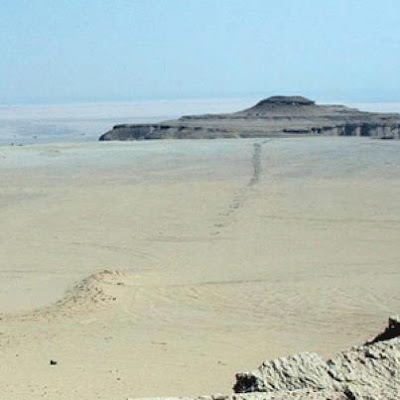











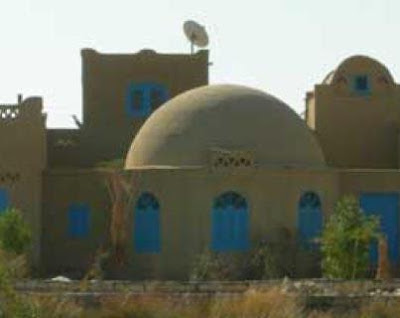







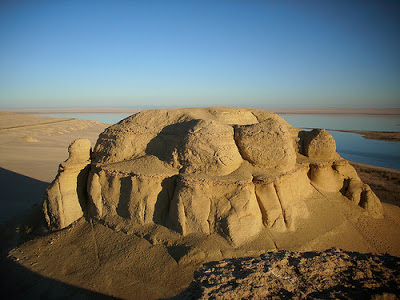








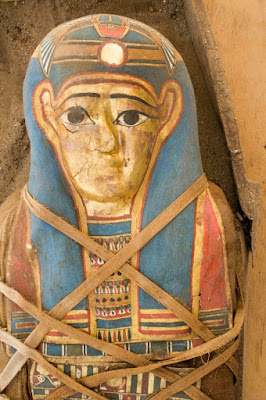

Excellent Repot..Hope to visit soon.
ردحذفyou are welcome
حذفThank you for such wonderful photos and easy to understand information.
ردحذفwelcome also you can visit Hope to visit my Blog about Fayoum Fayoum
حذفأزال أحد مشرفي المدونة هذا التعليق.
ردحذف